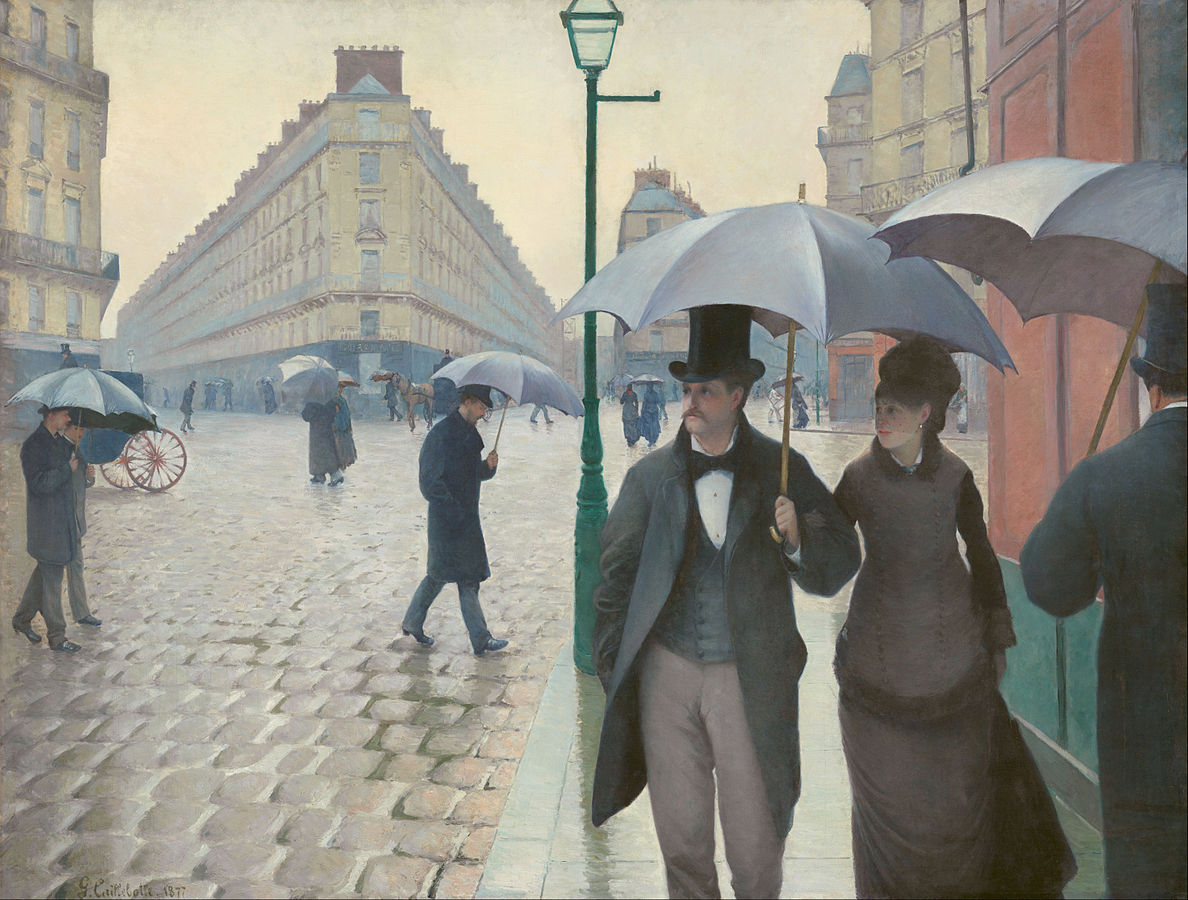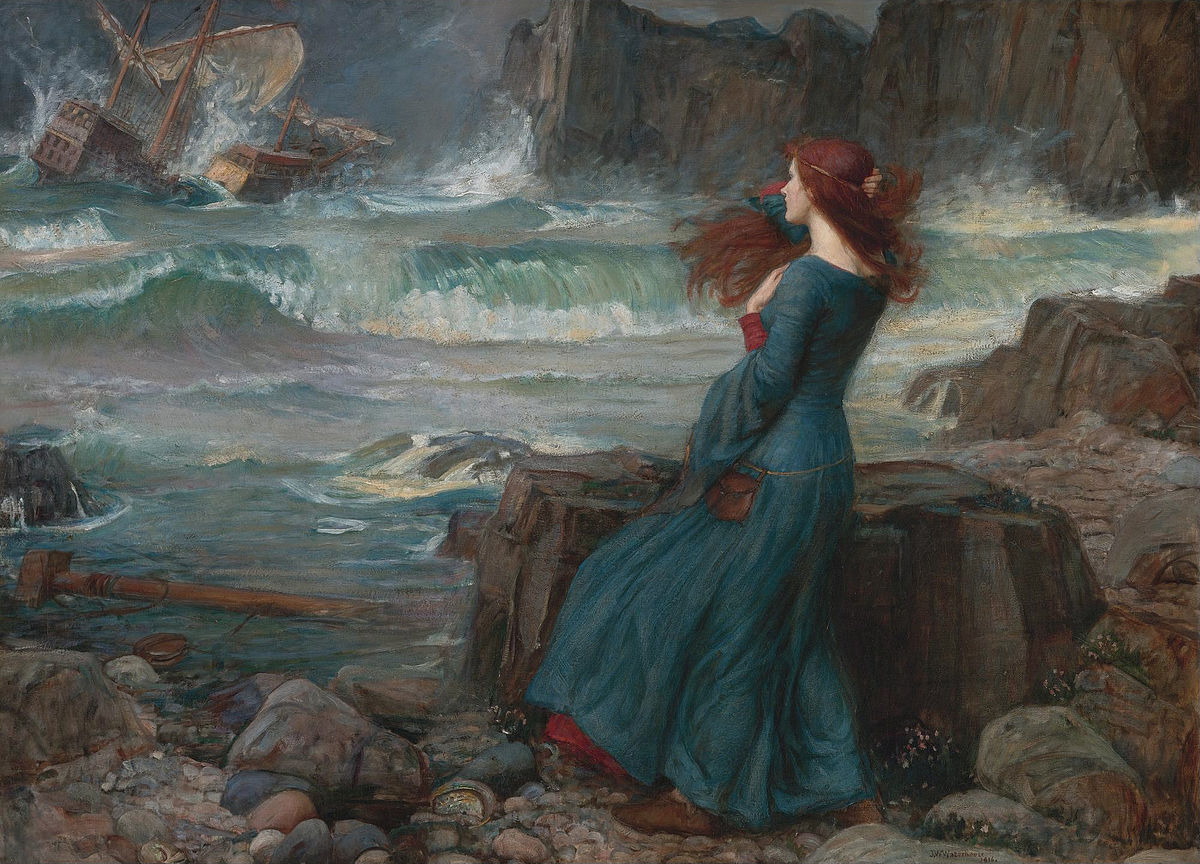Yesterday, we had the pleasure of attending a guest lecture by the renowned communications scholar, Dr. John Durham Peters. His presentation, Environments as Media, is based on his 2016 book, The Marvelous Clouds, which explores the parallels between the natural and technical worlds.

Gustave Caillebotte. Paris Street, Rainy Day, 1877. Art Institute of Chicago. Image via Wikimedia Commons.
He talked about why the weather has become a safe, yet banal public topic and explored its history in Western society. He traced its importance in literature, philosophy, mythology, and history, even referencing Shakespeare and Impressionism. He revealed that back in the 18th century, the weather was actually an exciting and dramatic topic. There was no such thing as a mundane weather report. It was communicated in a very different way and often associated with divinity, vengeance, and mystery. It wasn’t until the 1870s that everything changed. With the invention of the telegraph came the ability to move information quickly. This made weather data stale very fast, contributing to the perception that such information is “boring”. Our growing distance from the complex infrastructure used to predict weather also contributed to this shift. Peters pointed out how we often view weather as raw and instant, but really, it comes from a complex global system of labour. Technology has taken away the mystery and mood that historically made weather so fascinating.
During the Q&A period, he discussed how to communicate important information without dramatizing it. To cut through the theatrics of our 24/7 news cycle, he advised we consistently whisper to get people’s attention. And that the best way to communicate is through trust and reliability, the very features that shape the way we perceive the portrayal of weather in the 21st century.
To view a similar presentation, check out this recording of a lecture Peters gave in Germany in June 2018.

John William Waterhouse. Miranda—The Tempest, 1916, Private Collection. Image via Wikimedia Commons.
- Log in to post comments



CRC Comments